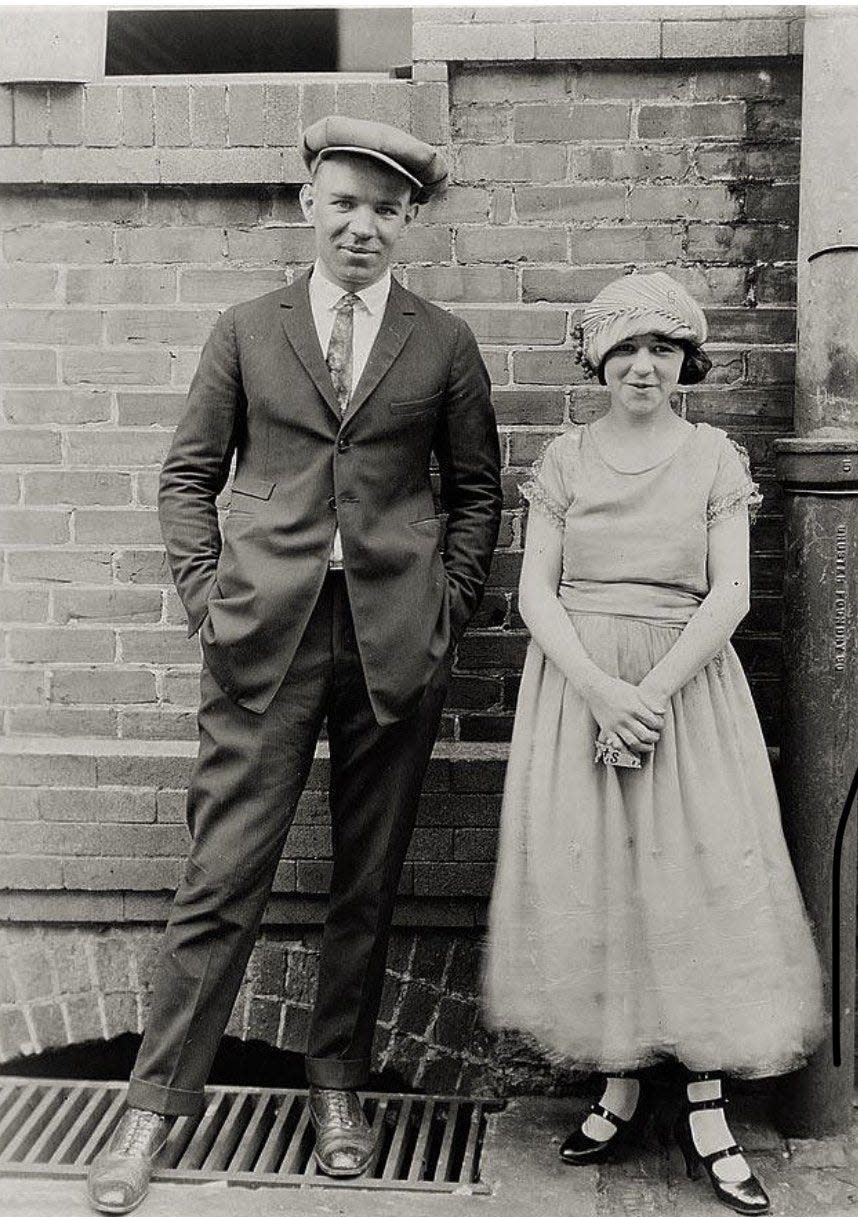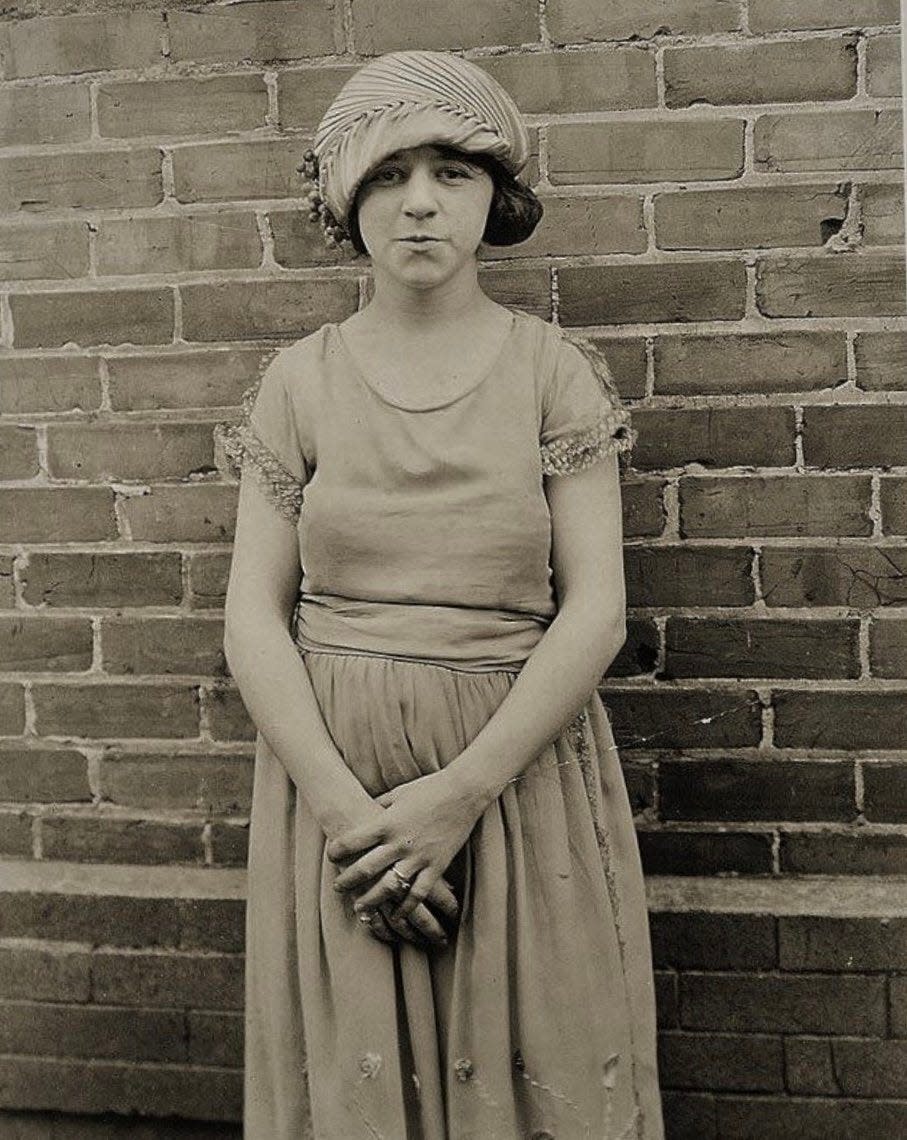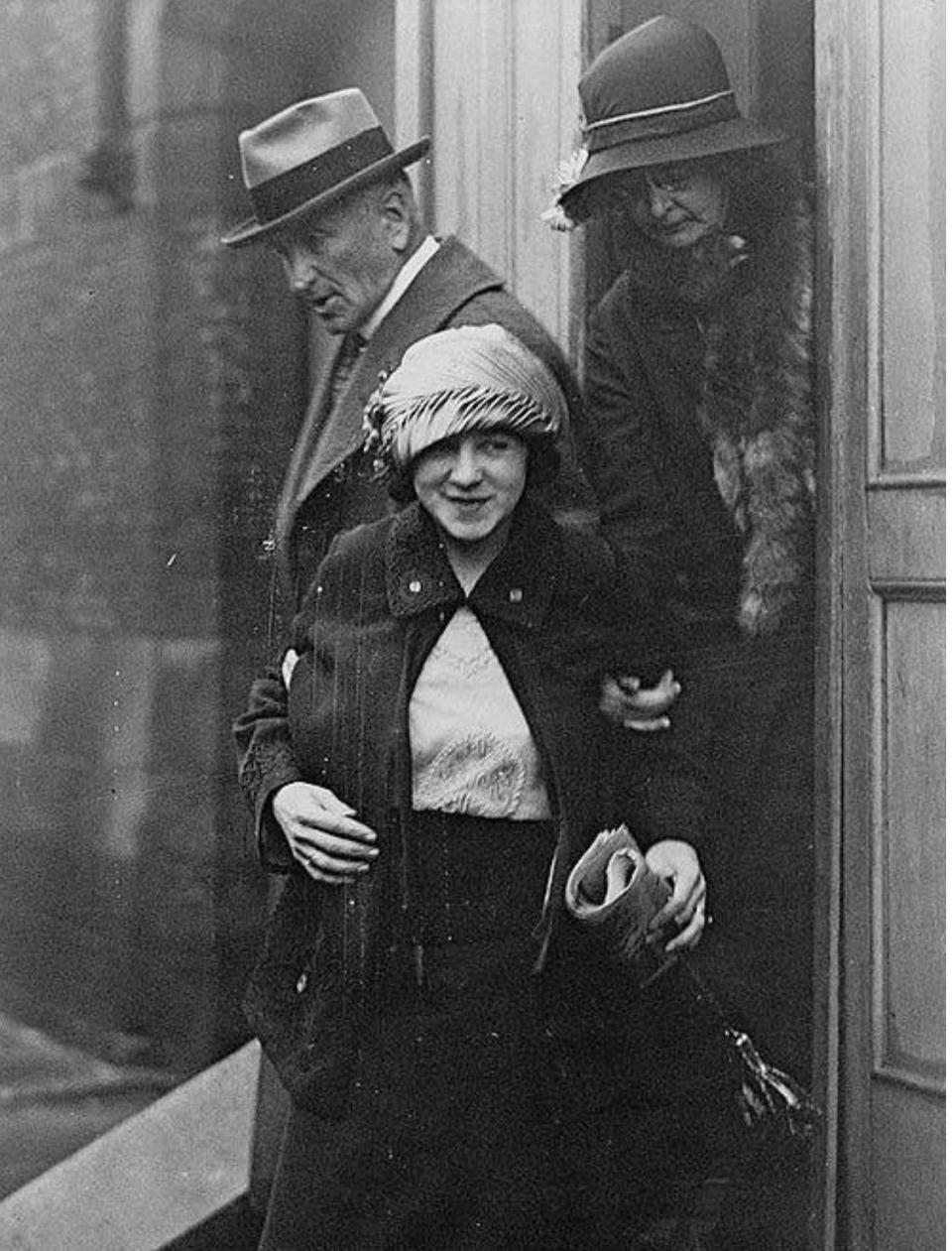After notorious crime spree, 'Bobbed Haired Bandit' nabbed in Jacksonville 100 years ago

A hundred years ago, Brooklyn's Bobbed Haired Bandit was the talk of New York, glorified by the newspapers and hounded by police as she and a man, dubbed her "tall companion," held up numerous targets at gunpoint: a grocery store, drugstore, restaurant and butcher shop, among others.
Most of the fascination was with the petite young woman, with her brazen, even cocky manner, her stylish clothes, her trendy bobbed hair (she added blonde curls to her dark hair, as a disguise) and her automatic pistol always at the ready.
It was a great story, a zingy chapter in the lore of the Roaring '20s: "Her crimes made gorgeous reading," proclaimed one New York columnist. But within a few months, her story led to tragedy, and desperate bravado, far from Brooklyn.
Shortly after midnight April 21, 1924, New York detectives finally caught up with her and her tall companion — who turned out to be her husband, Edward — in a shabby boardinghouse in Jacksonville. Their situation was dire. They were broke, in hiding, afraid to show their faces, and their daughter Katherine, born in Jacksonville, had just died. She was only a few days old.
Still, the Bobbed Haired Bandit remained defiant. And according to at least one story — and there were many differing stories about her, some of them perhaps even true — she was able to quip to the arresting officers, "I won't shoot if you won't."
Another story said that as she surrendered, she gave police this frank, even prideful proclamation: "I am the bobbed haired bandit you have been looking for."
Her life of crime ended on that morning in Jacksonville. But there was still much more to her story.
Who was Brooklyn's Bobbed Haired Bandit?
Her name was Celia Cooney. In the first months of 1924, she was 20 years old, pregnant, and just a little over 5 feet tall.
She looked bigger with a gun, some said.
Before turning to larceny, she had been a laundry worker who wanted, she said, to give her baby a better life than hers. That, she reckoned, would require more money than she had then or would ever have in a straight life.
So on Jan. 5, 1924, Cooney, several months pregnant, put on a gorgeous sealskin coat that she and her husband could not afford (Ed, a 25-year-old auto repairman, liked her to look nice). Then she walked into a grocery store in Brooklyn and approached six male clerks.
As she related later in a tell-all newspaper story, she asked the clerks for some eggs. At that, Ed walked in behind her. And when one of the men put the eggs on the counter, she pulled her gun out of a pocket of that sealskin coat and pointed it in his direction.
"Stick 'em up! Quick!" she said.
That was the first the world heard of the Bobbed Haired Bandit, who made away with more than $600 — a real fortune — that she and her husband quickly burned through, getting a nicer apartment, some good furniture and things for the baby.
So she and her tall companion committed more holdups, gaining legendary status in dueling New York newspapers and in the imagination of New Yorkers — and causing much embarrassment for those in the police department, who seemed flummoxed by this young, petite woman, whose very existence seemed to be mocking them.

But it eventually got too hot for the Cooneys in Brooklyn; too many people had seen their faces, and all that publicity didn't help. So they booked passage on a steamship to Jacksonville. They could give up crime and start a new life in Florida, they figured, with their new baby, who was due within weeks.
First though, one last big job in Brooklyn.
A shooting, and an escape
In their 2006 book, "The Bobbed Haired Bandit: A True Story of Crime and Celebrity in 1920s New York," authors Stephen Duncombe and Andrew Mattson describe the last holdup. It was a daring daylight robbery with the potential for a big payoff.
Ed picked the spot, very close to where they lived: the payroll office of the National Biscuit Co. The couple drew up an elaborate plan to pose as out-of-towners, even to the point of getting a chauffeur to drive them to the robbery in his Packard. The unfortunate fellow ended up tied up by picture wire and left on the floor in front of the back seat.
Meanwhile, inside the biscuit company's busy payroll office, things went wrong, quickly, and Ed shot and wounded a clerk who resisted. The company safe was open, but the bobbed haired bandit and her companion had no time to grab the cash now. They skedaddled to the Packard and ditched it near a railroad station a few blocks away, leaving the chauffeur still bound in the back.
The New York Times noted that the shooting at the biscuit company "showed that the woman and her companion had become desperate, that they would kill before they would allow themselves to be captured."
It was only a matter of time, the newspaper reckoned, before someone died.
But as police searched the area and newspapers speculated on what would happen next, the Cooneys were already on a ship to Jacksonville, "seasick and afraid," Duncombe and Mattson wrote.
'She went out and got what she wanted'
The Bobbed Haired Bandit's felonious exploits thrilled journalists eager for a good yarn. Consider the words of Nunnally Johnson, a columnist for the Brooklyn Eagle, who after her arrest wrote that despite all the ink spilled about on her, the bobbed haired bandit was deserving of even more: “What Celia Cooney deserves is a ballad, a glorious painting, or perhaps a statue, preferably in Prospect Park,” he wrote.
To be sure, Johnson, who would go on to a prolific career in the movie business, noted that she was no saint: “She used pretty bad language and was not averse to choking somebody now and then.”
But she was, Johnson noted approvingly, the real thing: an outlaw along the lines of Jesse James, but with bobbed hair and crimson lipstick.
“Remember," he wrote, "that her crimes made gorgeous reading, that she did not go into whatever trades are open for $12 a week to an untrained girl when she and Cooney found that his $30 a week was not sufficient to live on, but that she strapped her old .44 on around her waist, slashed her lips with crimson, powdered her nose, and told a chain grocery clerk to get in the back room before she bumped him. She went out and spread fear. She went out and got what she wanted.”
In their book, Duncombe and Mattson focus on the press mania over the story of Celia Cooney, noting that in, the face of such a charged tale, accuracy was often a victim. "For any given event, we found anywhere from two to twenty competing and often conflicting reports," they wrote.
The Bobbed Haired Bandit's tale was a pliable one as well, depending on who was telling it and who was eating it up.
"The story was told and interpreted, pushed and pulled, to fit the morality and politics of the writer and reader," the authors write. "She was a feminist heroine and a wanton vamp. She was symptomatic of a permissive society that coddled its criminals and the unfortunate product of the slums and the factory, an argument for law and order, and a call for progressive social reform. She was a desperate mother who stole for the sake of her unborn child and a spoiled flapper looking for kicks and cash to buy luxuries for herself."
Most of all though, the authors said, was this indisputable fact: "She was a good story."
Police get closer
A New York Times story said police had figured out by April 15 that it was the Cooneys behind the hold-ups. And after learning that Celia was pregnant, officers “requested a watch on every hospital, doctor’s office, maternity home and all such places where the girl would be likely to go.”
That might have led police to Jacksonville, or perhaps not. Duncombe and Mattson write that there were many theories about how the Cooneys were tracked to Florida; a likely one was that police intercepted mail from Ed Cooney to his mother, asking for money. The Jacksonville undertaker who buried their daughter might have also provided the final clue to their location.
However it happened, the Cooneys were caught, at gunpoint, and loaded onto a train in Jacksonville under the watchful eyes of the detectives.
The real McCoy: Local boatbuilder sailed through the Roaring '20s on a sea of illicit booze
They were bound for New York, the scene of the crimes, where a crush of spectators rushed their train upon its arrival at Pennsylvania Station. They drew a bigger and far more enthusiastic crowd, it was noted, than President Calvin Coolidge, who'd left from that very place just before the Cooneys' arrival. "The arrival of the couple from Florida bordered on the spectacular," The Times wrote.
Some papers painted her as a grieving young mother; others emphasized her still-breezy demeanor and the apparent pleasure she took in her notoriety. The Times took the latter approach, noting that Celia Cooney seemed to be rather enjoying it all, grinning "behind the magazine she held to hide her face from the cameras."
The Times was somewhat catty about the media sensation at the heart of the story. “She is a pert, self-sufficient appearing little person, with plenty of nerve, and she seems to consider herself the heroine of a melodrama. Her husband is slower witted than she and somewhat ungainly. Neither is prepossessing. She is not a blonde and never was. Her hair is black, but on the first occasion on which she committed a hold-up she wore blonde curls pinned under the brim of her hat."
The truth of the Bobbed Haired Bandit comes out
The court proceedings were widely followed in the press and the public, which breathlessly followed the story as the Cooneys pleaded guilty and were eventually sentenced to 10 to 20 years. But when they were released after seven years, in 1931, they reentered a world that had largely forgotten the exploits of the Bobbed Haired Bandit.
Things looked up though, for a while. Ed, who lost an arm in a prison accident and developed tuberculosis behind bars, was awarded a $12,000 settlement, which proved to be enough for the family to buy a cottage on Long Island.

But he died from tuberculosis in 1936 at 37, leaving Celia in that cottage with the couple's two young sons. As a single mom, she was soon in desperate financial straits once more, especially after a fire destroyed everything she owned after she and her sons moved back to New York City.
Decades later, after living a quiet, crime-free life, she moved to the Tampa Bay area in Florida under the care of a son; she developed Alzheimer's disease and died there in 1992 at 88 years old.
The 1920s: Bootleggers were big business in the woods and swamps of Northeast Florida
She had kept her bandit life a secret from her children, only talking about it as her mental state declined, Duncombe and Mattson write. After she died though, her son Ed began researching her secret life, finally finding out the truth about his mother, the Bobbed Haired Bandit. He told the authors that it was hard to talk about it without breaking into tears.
But what a story it was, for a while. The New York American even paid her $1,000 for her serialized memoir that went across the country purporting to tell the truth behind the "Bobbed-Hair Bandit's Own Story." It was, the paper assured its readers, "the strangest, weirdest, most dramatic, most tragic, human interest story ever told."
This article originally appeared on Florida Times-Union: Brooklyn's Bobbed Haired Bandit caught in Jacksonville a century ago

